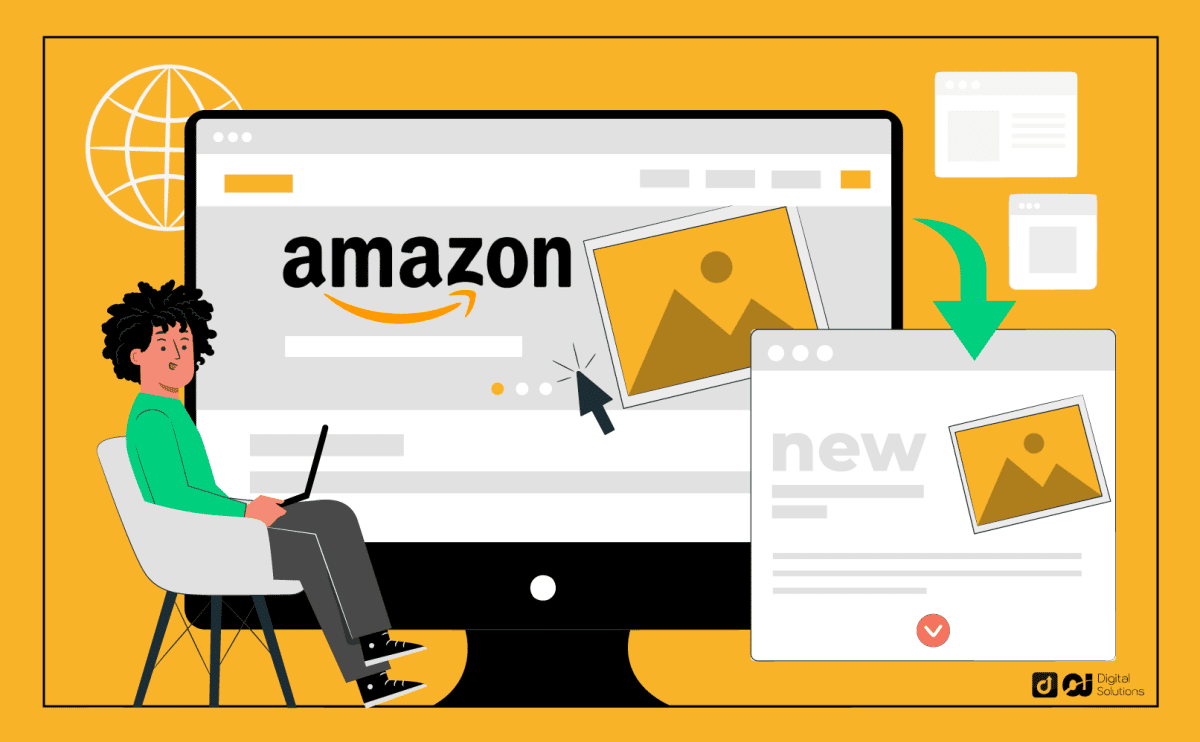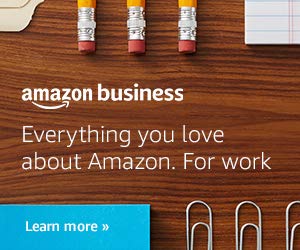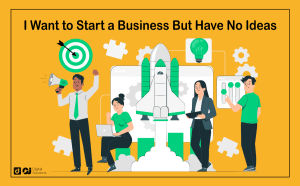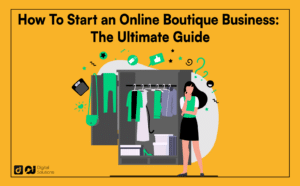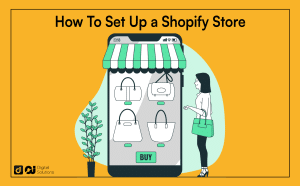You have likely seen the Amazon Prime badge on many product listings when browsing on Amazon.
Its meaning is obvious to a customer who is also a Prime member: receiving free same-day or 2-day shipping after purchasing the item.
The advantages of having the Prime badge prominently displayed on your listing may not be immediately apparent to you as a professional seller.
Still, there is no doubt that having the Prime badge benefits anyone selling on Amazon.
In this guide, I will cover how to sell on Amazon Prime effectively this year.
I’ll outline the three options for selling on Prime, how each one operates, its benefits and drawbacks, and how to decide which is best for your company.
Keep reading to learn more.
Different Ways To Sell On Amazon Prime
You can sell on Amazon Prime in several ways. These include:
Fulfillment By Amazon (FBA)
You will be responsible for sending your inventory to Amazon and paying a storage fee if you decide to use Fulfillment by Amazon to sell on Amazon Prime.
As a result, when customers make purchases, Amazon will ship out your products from their warehouses. Amazon will take care of the shipping of the goods and deal with customer service issues, so you don’t have to.
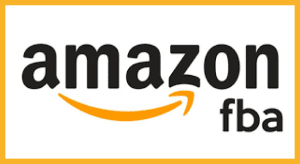
Source: Amazon.com
You only need to be concerned about optimizing your Amazon product listing. Although it may be a practical choice for sellers, some risks are involved.
Because you are entrusting Amazon with your inventory, they are liable for any damage or loss to the goods when they’re in their possession.
You will be responsible for sending your inventory to Amazon and paying a storage fee if you decide to use Fulfillment by Amazon for your business.
As a result, when customers make purchases, Amazon will ship out your products from their warehouses.
Pros
- You get the chance to deliver your products to customers at lightning speeds.
- You can cut operating expenses by using Amazon FBA.
- You benefit from Amazon’s prestige when you use FBA.
- You can raise your ranking and popularity on Amazon.
- You gain from Amazon’s highly effective systems.
- You get to use Amazon’s 24/7 customer service to handle customer service inquiries.
Cons
- With the Amazon FBA program, storage and fulfillment shipping costs are your responsibility.
- It will cost you more the more inventory you keep on hand.
- For products that are being brought into Amazon’s warehouse to be fulfilled through FBA, Amazon has a set of requirements that need to be followed.
Seller Fulfilled Prime (SFP)
You can sign up for Amazon Seller Central if you already ship or sell products directly to customers or if you are already an Amazon seller and would like to handle shipments directly.
In self-fulfilled Prime (SFP), you will be responsible for managing everything internally instead of having Amazon store your products and ship them to customers.
Nevertheless, to be eligible for Prime, you must meet Amazon’s quality requirements, which include not charging for shipping and delivering orders promptly and precisely.
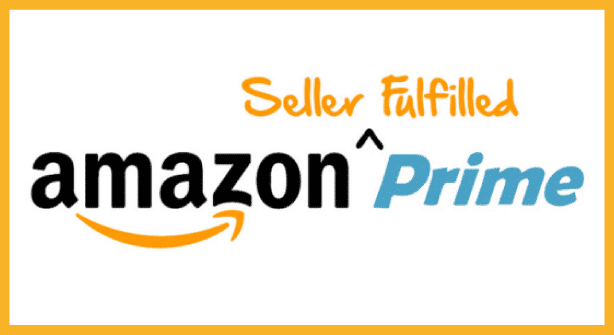
Along with guaranteeing you have the required stock on hand to start fulfilling your Prime orders, you should also explore Amazon’s approved shipping partners to find the best fit for you and your company.
There is a waiting list for Amazon sellers who fulfill their own orders (FBM) and would like to become Prime sellers.
Once approved from the waiting list, you must go through a trial period for Amazon to guarantee that you can fulfill all orders successfully.
Pros
- SFP is a good option to add value to your brand and position it or simply put it at the forefront of your transactions.
- You have more control over your business when you opt for SFP.
- Offering Prime products is possible without obsessing over stringent regulations with shipping to Amazon.
- You can hire a fulfillment partner and save money on SFP.
Cons
- It can be challenging to be approved for Seller Fulfilled Prime on Amazon.
- It can be challenging to keep up a high standard of efficiency when it comes to tracking and fulfillment.
- It can be difficult to upscale while keeping your delivery time and quality constant.
Vendor Central
Instead of selling directly to customers through the third-party marketplace, you sell to Amazon as one of its wholesale suppliers. This is possible under Amazon Vendor Central.
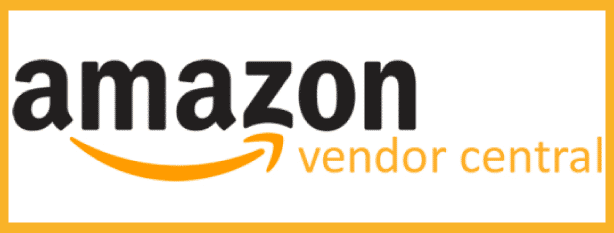
Vendor Central on Amazon is by invitation only, which means that to take part, you must be chosen by Amazon as a vendor.
For well-known manufacturers and brands, most of whom have already received invitations to join the Prime program, Vendor Central is most pertinent.
Vendor Central differs from Seller Central in that in Vendor Central, Amazon will purchase your products from you and resell them to their customers.
Through the Amazon marketplace, however, you can sell your goods directly to customers using Seller Central.
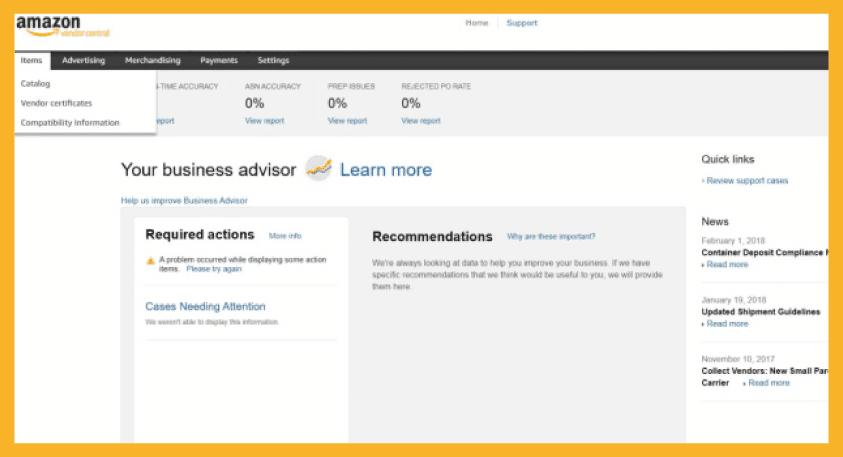
Pros
- You can develop a reputation as a reliable supplier.
- When compared to an Amazon seller account, using a vendor account is much simpler because you only need to worry about providing Amazon with a consistent supply of goods.
- When you sign up for Vendor Central, you are automatically eligible for promotional programs offered by Amazon.
- You are guaranteed a steady income because you supply Amazon continuously.
- You supply more stock the more popular your product is on Amazon.
Cons
- You give up control over how your company and product are portrayed on Amazon.
- Joining this vendor program is exclusive, and you can only do so if Amazon extends an invitation.
- Obtaining information about the customer who purchases your product from Amazon can be challenging.
- For fulfilling purchase orders, Amazon has established clear, strict guidelines.
Kindle Direct Platform (KDP)
You can self-publish paperbacks, eBooks, and hardcover books on KDP. Amazon enables you to create a product detail page for your book and offers direct access to your book on the platform.
Additionally, it gives you the choice to increase your book’s global accessibility, making it more available to readers everywhere.
The full rights to your book are yours once you publish with KDP, which is usually not possible with a traditional publishing house.
Authors can get their books in front of Amazon’s most active readers by using the optional promotional program known as Prime Reading. Unlimited reading is free for Prime Reading subscribers.
Throughout the duration of your Prime Reading promotion, your book will continue to be open for regular purchases and royalty payments.
For Prime Reading to be available, your book must be registered with KDP Select.
Pros
- Rockstar authors will receive a bonus from Amazon if their books are among the top 100.
- If they choose KDP Select, authors may be able to raise their rankings more quickly.
- You can quickly start selling your eBook by self-publishing on KDP.
Cons
- Due to the constant algorithmic changes on Amazon, you cannot predict an eBook’s ranking there.
- Your eBook’s price is entirely under Amazon’s control.
- Because of the exclusivity clause, your book visibility is decreased.
Amazon Prime Requirements For Selling Products
Here are the requirements for selling products on seller fulfilled prime:
- Present premium shipping alternatives
- Have an order cancellation rate of less than 0.5 percent and deliver more than 99 percent of your orders on time
- For at least 99 percent of orders, use Amazon Buy Shipping Services.
- Have all standard-size products delivered all over the country.
- Utilize shipping techniques that permit weekend pickup and delivery (Saturday or Sunday)
- Ensure that the 1-day and 2-day delivery promises are met
- Orders are delivered using Amazon’s trusted Seller Fulfilled Prime carriers.
- The Amazon Returns Policy must be accepted by the seller.
- Enable Amazon to handle all customer service requests.
Amazon doesn’t expressly state what FBA sellers must do to obtain and maintain the Prime badge, but it appears that they emphasize the following:
- Having a rate of order defects of less than 1%
- Observing the listing and product policies on Amazon
- Complying with Amazon’s storage restrictions for inventory
How To Become An Amazon Prime Seller
If you’re new to Amazon or are only beginning your Amazon selling journey, becoming an Amazon Prime seller may seem daunting. However, with some patience, it can be a smooth process.
There are things you can do in the interim, even though it might take some time to become a fully-fledged Prime seller because you’ll need to build up your seller metrics.
Research your product first to ensure that it is in high demand and faces little competition. Create an optimized listing on Amazon after you have decided what you’re going to sell and have located the best manufacturer.
If you choose to sell through Amazon FBA, package your products appropriately and ship them to Amazon. Make sure to follow Amazon’s packaging requirements since they are quite strict on this.
Finally, create a strong launch strategy to assist you in gaining reviews. Promotions, customer follow-up emails, and PPC (pay-per-click) campaigns should all be part of it. With a growing seller account that has good ratings and reviews, you can then become eligible to start selling Amazon Prime.
You can become an Amazon Prime seller under Self-Fulfilled Prime by following the following steps:
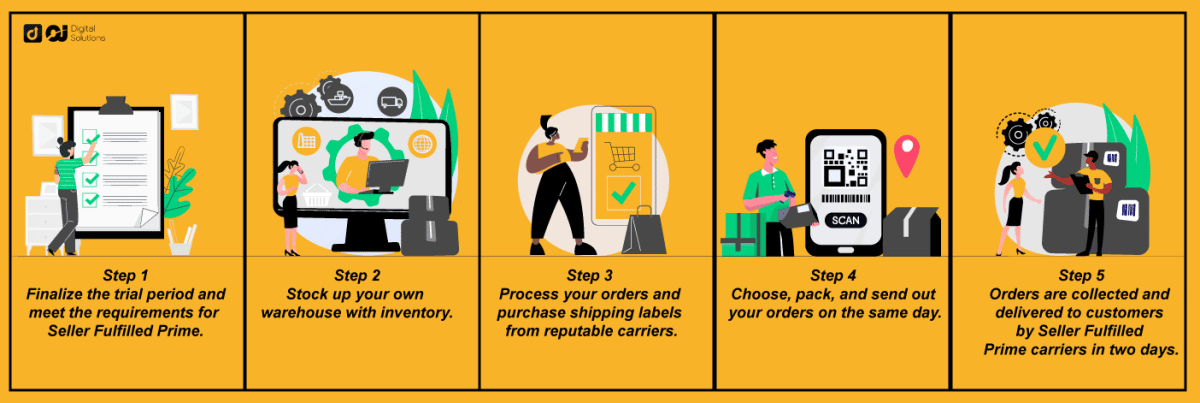
Step 1: Finalize the trial period and meet the requirements for Seller Fulfilled Prime.
Step 2: Stock up your own warehouse with inventory.
Step 3: Process your orders and purchase shipping labels from reputable carriers.
Step 4: Choose, pack, and send out your orders on the same day.
Step 5: Orders are collected and delivered to customers by Seller Fulfilled Prime carriers in two days.
Why Sell On Amazon Prime VS Amazon?
Selling on Amazon Prime has numerous advantages. These include:
Increases chances of getting the Buy Box
Prime gives you a competitive edge over rivals for products with multiple sellers by giving you access to the Buy Box.
It is among the most significant, if not the most crucial, factors in determining the Buy Box winner.
If you are unfamiliar with how the Amazon FBA Buy Box system operates, sellers are paired with purchases. Customers prefer not to spend time comparing various sellers to find the best one. In its place, Amazon makes the decision.
The vendor in the “buy box” receives the sale after the customer places the item in their shopping cart. Your chances of landing the box are better if you are a Prime affiliate.
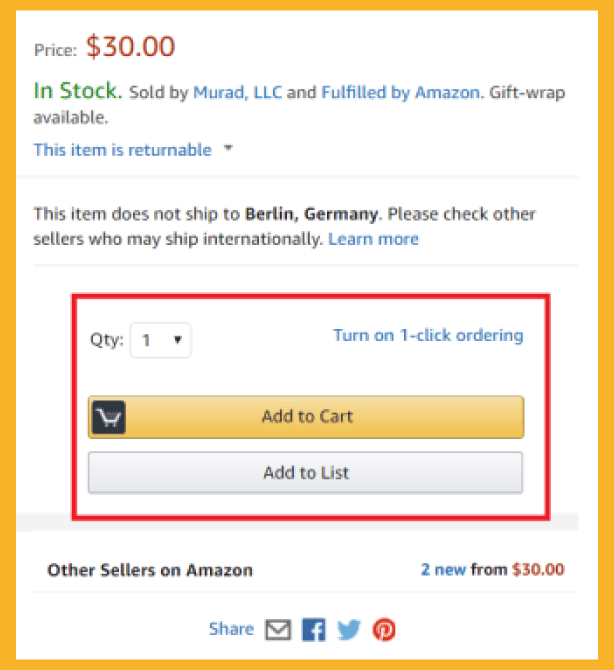
Boosts your ranking
Your products appear higher in search results when you’re a Prime seller. Customers will choose your brand over your competition if your listing is closer to the top when you search for a product, just like with search engines.
For private label sellers, who frequently compete against several comparable products that already bear the Prime badge, this is crucial. They would be at a disadvantage if they were the odd one out, which makes this extremely important.
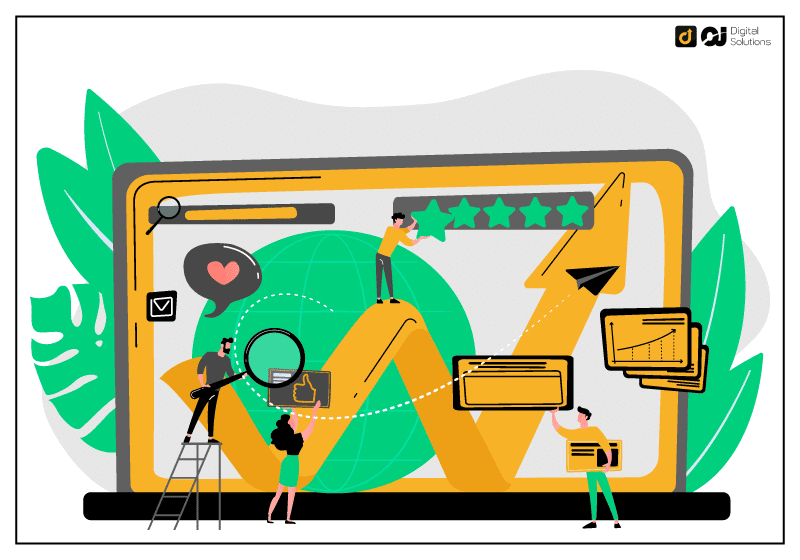
Improved customer satisfaction
Making shopping as convenient for customers is a great Amazon sales strategy. With all the benefits that Prime members already enjoy, such as free shipping and quicker delivery times, you are clearly in the lead.
You have unrestricted use of the 1-day and 2-day order delivery options. People today demand instant delivery of everything.
Therefore, offering immediate service may increase the number of customers who use your products and encourage repeat purchases.
More sales
The ability to reach Amazon Prime Members, among the company’s biggest spenders, is one of the program’s most significant selling points for sellers.
In addition to spending more overall, Prime members also shop more regularly and spend more each time they visit the market.
By making your product available through Prime, you give your Amazon business a huge boost in sales.
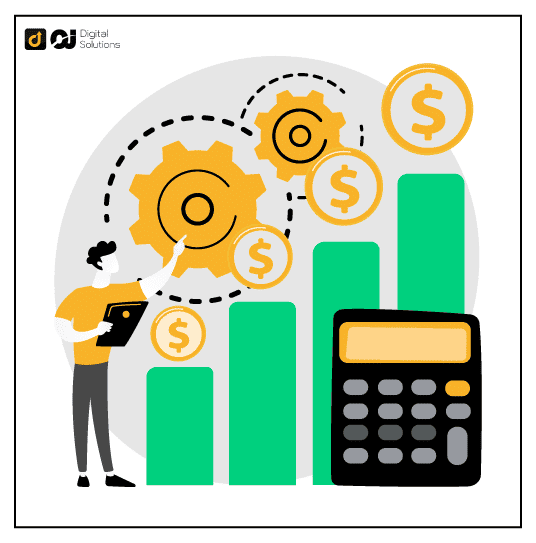
FAQs – Frequently Asked Questions
Is Selling Through Amazon Prime Profitable?
Yes, selling through Amazon prime is profitable, and yields a higher sales volume.
The demand for online shopping has grown, and although there is more competition on Amazon as well as other ecommerce platforms, 63 percent of customers start searching for a product on Amazon.
You must invest the necessary effort and time if you want to sell on Amazon. You can easily launch your first product and generate some sales if you remain consistent. Learning how to run an Amazon Prime business needs some persistence and hard work, but it is worthwhile.
How Much Does It Cost To Be A Prime Seller?
Your fulfillment strategy will affect how much it costs to sell on Amazon Prime. The price of Prime is included in your Fulfillment by Amazon (FBA) fees if you sell FBA products.
However, you won’t be required to pay any additional Amazon fees if you choose to self-fulfill your product orders (also known as FBM).
Your seller plan will also play a role on how much it costs you. Regardless of how many units you sell, the Professional plan costs $39.99 per month, while the Individual plan costs $0.99 for each unit sold.
Is It Easy To Sell On Amazon Prime?
Some people find it easier than others to sell on Prime. It is generally not a complicated process if you are prepared to put in the work.
Joining Amazon FBA, a successful and highly automated fulfillment network, is the easiest approach to selling on Amazon Prime.
Amazon stores your product inventory in their warehouses after receiving it from you. Amazon then packs and ships a customer’s order that was made through your listing.
The Bottom Line
I hope this guide has been helpful on how to sell on Amazon Prime.
There is little doubt that, for the majority of sellers, selling on Amazon Prime has a significant impact on boosting sales.
You have a few options when deciding how to get it for your product listings: FBA, SFP, KDT, or Vendor Central.
In the end, selling on Amazon Prime gives you a way to reach prime customers with your brand and items more quickly than ever.
You will be successful at selling on Amazon if you put in the effort, keep improving, and keep learning from your mistakes.
Enjoyed this article? Why don’t you check out this guide on shipping products to Amazon’s fulfillment centers?

